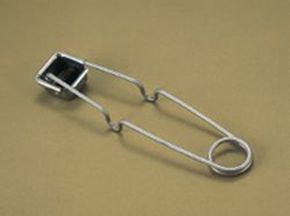Lighting Up: Using a Blowtorch
After gearing up, a welder follows certain steps to turn a blowtorch on and off. As different torches have different safety procedures, refer to the specific manufacturer instructions before operating a blowtorch. A step-by-step procedure for turning on an oxyacetylene torch goes like this:
- Turn the acetylene regulator screws out to allow gas through and adjust the working pressure of the gas.
- Open the acetylene cylinder slowly, but only a third to a half turn. This allows for the release of acetylene.
- Open the acetylene needle valve on the torch head and adjust the acetylene regulator to the best working pressure (about 5 psi).
- Close the acetylene needle valve. This stops the flow of acetylene so that you can start the oxygen safely.
- Turn oxygen regulator screws out so that oxygen can flow and you can adjust the working pressure.
- Open the oxygen cylinder valve slowly until completely open. This allows for the release of oxygen.
- Open the oxygen needle valve on the torch head. At this point, you can adjust the oxygen regulator to attain the best working pressure (about 5 psi for welding purposes).
- Close the oxygen needle valve so that you stop the flow of oxygen and can later light the gas safely.
- Pause and test for leaks in any of the valves and hoses.
- Open the acetylene needle valve again so that the gas is released and it can light.
- If the blowtorch is not equipped with an internal spark ignition device, light the acetylene with a friction lighter held about one inch from the tip.
- Wait for the black smoke to stop and slowly open oxygen needle valve. Adjusting the oxygen needle valve affects the type of flame you get. A neutral flame is commonly preferred and is made up of equal parts acetylene and oxygen.
But to switch off the torch, you follow these steps:
Advertisement
- To switch off the torch, close the acetylene needle valve first, which extinguishes the flame.
- Close the oxygen needle valve. This cuts off the flow of oxygen.
- Turn off the acetylene cylinder valve and then turn off the oxygen cylinder valve. This stops the release of the gases from their cylinders.
- Open the acetylene needle valve until gauges read zero pressure and turn out the pressure adjusting screws on acetylene regulator. Close the acetylene needle valve. This drains any remaining acetylene pressure left in the hoses and torch.
- Open the oxygen needle valve until gauges read zero pressure and turn out pressure adjusting screws on oxygen regulator. Close the oxygen needle valve. This drains any remaining oxygen pressure left in the hoses and torch.
[Source: Oregon State University]
Intimidated by all those steps? You may want to try arc welding, which is eliminating the need for welding with gas blowtorches. Arc welding heats metal by means of electric discharge and is generally faster and more efficient than the blowtorch process since it focuses heat more precisely [source: Fundamentals of Professional Welding]. However, gas blowtorches still are used in certain fabrication processes, as well as in other capacities, such as plumbing, which we'll discuss next.
